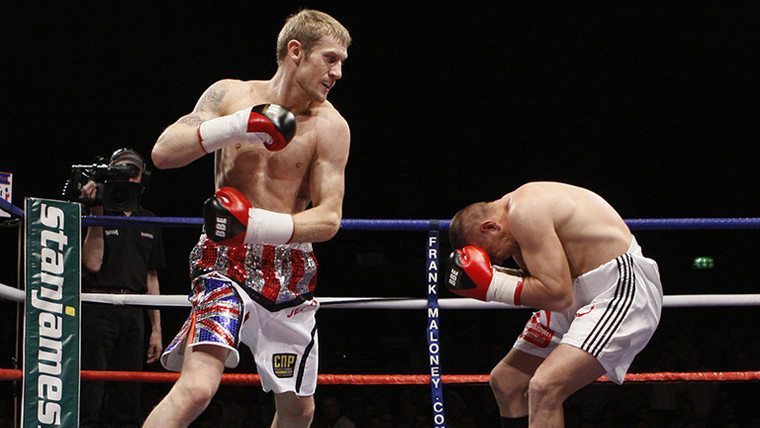Deadly Discipline with Boxer Tony Jeffries
Jun 30th 2021
It would be a mistake to talk about fighting and self-defense without addressing the basic skill set of boxers. Tony Jeffries is a world-class professional boxer, an Olympic medalist representing the UK, and now is one of the most popular boxing instructors in the world.
Our friend Clint Emerson, New York Times best-selling author of 100 Deadly Skills and Escape the Wolf, met with Tony to learn some of the basics of boxing, how to train form, power and speed, and how to apply boxing to everyday threats.
Tony started boxing at an early age after he leveled a fellow 10 year old bully at school. After that his dad insisted that Tony was going to learn how to box, and almost immediately he started winning titles and rising through the rankings. Now he trains fledgling boxers the tools of the trade.
Boxing Breakdown
Tony describes the four basic punches in boxing–the jab, cross, hook and uppercut–and how the right combination of those can effectively lay out an opponent in the ring. Learning and practicing these strikes can also build strength, endurance and bodily-kinesthetic knowledge of how to move with an opponent.
Jab. A strong jab can throw an opponent off, distract him and even devastate him if you catch him off guard. Remember to stand in a ready stance, jab straight, while throwing in the hips, and don’t forget to breathe.
Cross. If you land a jab followed by a cross punch, your opponent is going to have a hard time recovering his wits. As you’re throwing this punch, don’t forget to exhale, turn your hips and fully extend your arm.
Hook. This punch is exactly what it sounds like, a fist at the end of a hooked arm that maintains a lot of strength from that 90 degree angle of the elbow and of course hip rotation and breath. This is not a sloppy haymaker but rather a tightly formed attack. A hook to the head or body can inflict a lot of pain and knock-out force.
Uppercut. The uppercut is a strike to the head from underneath that attacks the jaw, throws back the head and can put an adversary out for the count.
Breathe. Tony emphasized the importance of breathing with each punch in order to stay relaxed. Relaxed muscles move freer, more quickly and more efficiently than tense muscles, thus creating more powerful punches and conserving your energy during a confrontation. So learn to breathe as you strike.
Speed. Developing speed as a boxer begins with developing good form. Learn good form, practice it repeatedly, and gradually increase your speed from that solidly-constructed platform.
Training for Boxers
In the video, found on the Warrior Poet Society Network, Tony also talks about how to increase strength, speed, agility and power.
Heavy bags. Gloving up and punching a heavy bag builds the musculoskeletal system and helps your brain and body pick up on proper form through feel.
Medicine balls. Throwing a medicine ball against a concrete wall, kind of like you’re throwing a punch in a giant, heavy glove, can also teach you form while building massive strength.
Balls of your feet. Boxers stay on the balls of their feet so they can move in and out quickly.
Shadow boxing. Literally boxing at your own shadow or reflection in a mirror can teach you form and precision, keeping you from throwing wild, off-target punches.
As with any of these skills or any others featured by the Warrior Poet Society, they’re only effective if they’re trained appropriately and often. Watching the videos featured here will help lay a foundation for developing your own defensive skill set.
To watch Clint Emerson’s full interview with Tony Jeffries and other defense experts, subscribe to the Warrior Poet Network.
For more information on Warrior Poet Society, swing by the official website.

